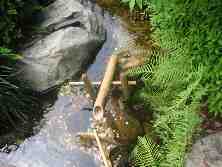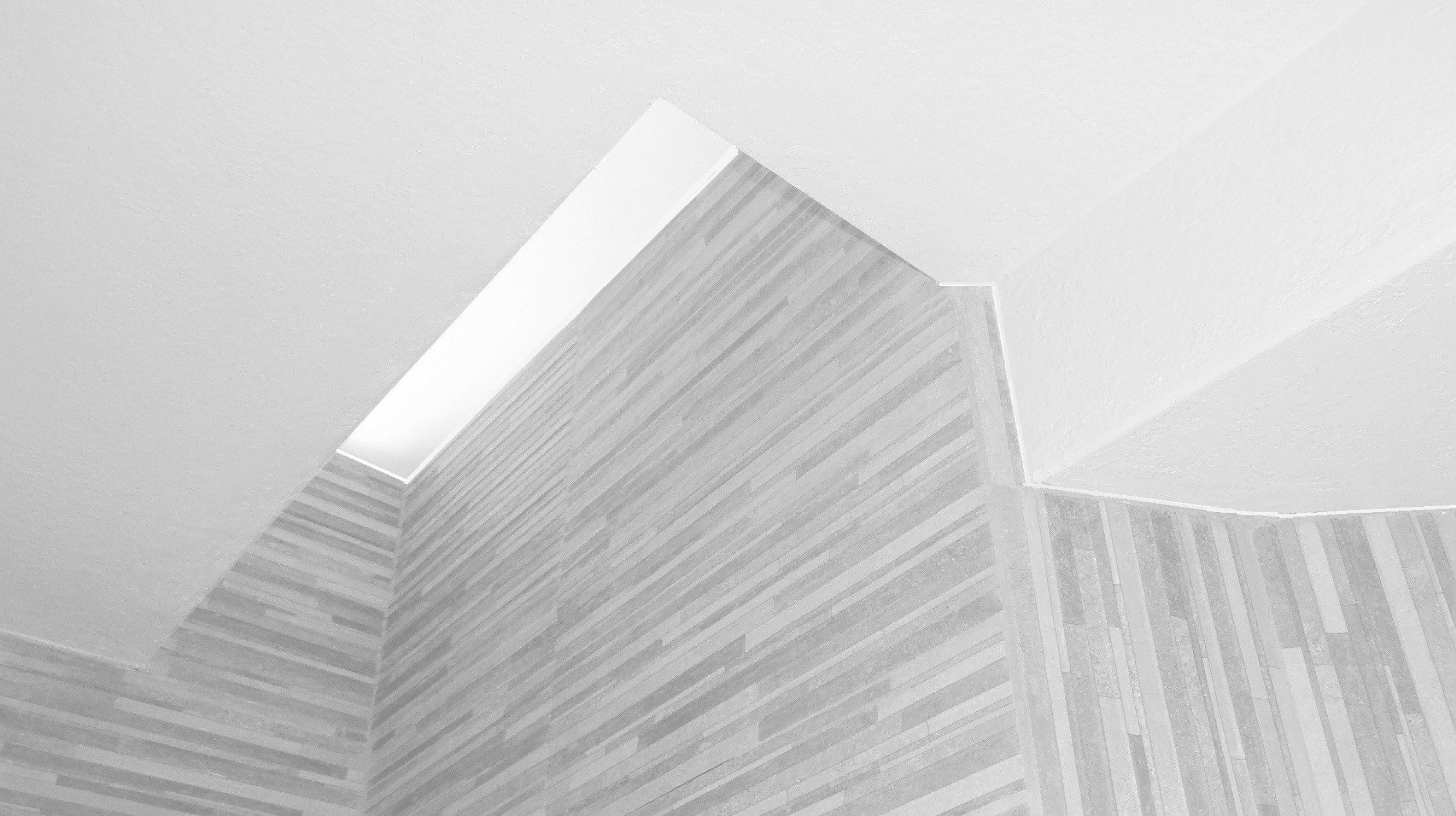tranquil Architectural Design
CREATING LIVING ARCHITECTURE AT ITS BEST
Creating
materials, textures, and space within Wabi Sabi is sacred art within
itself. Zen Architects will fuse Wabi-sabi/Feng Shui applications into
an zenergy blend. These systems may originate from the eastern globe,
yet the genre needs not follow eastern culture. In fact, the principles
may apply with all worldly materials and methods to trace with any
theme, yet still be Wabi-Sabi. Some examples of blending east into west
is the Bungalow folk craftsman style, Frank Lloyd Wright "Prairie" and
Greene & Greene "Gamble" . Successfully and timelessly these
craftsman styles of architecture bridge East/West coherently. Some
deeper examples of Wabi-Sabi eclectic approaches as follow:
Textiles:
Great resource for textiles or tapestries can come from 3rd World
countries. Most 3rd world items are hand made rather than machine made.
The energy transmitted through hand made items are lively. The
imperfections with irregularities adds to a relaxed feeling. Examples
include paper (Shoji screens), hemp plant, grass, silk, cotton and
natural pigments, all add to the indigenous themes.
Materials/Textures/Colors:
Where new materials can't appear old, chemical treated patinas may be
applied as finishes for all metals. Color bleed acid etched concrete is a
great substitute for finish floor. Sand blasting or wired brush for
metal or wood also accelerates weathered look appearance. Grass
wallpaper or wall paper infused with art/ calligraphy adds bold
interest.
Art/Murals: Contemporary art that is minimalist by nature often
works with Wabi-sabi. Calligraphy and Sumi wet-brush paintings enrich
the rooms.
 A lighted or accented alcove known as "tokonoma" becomes a
great showcase for flaunting art, textiles, cermaics, flower pot or
sculpture. By obtaining original art work rather machined copied
vitalizes a space as containing an aura feel. Kinesiology testing
Scientifically demonstrates original art as compared to a machined copy
to same art image has far more benefits for our well being. Hand crafted
murals designed for particular walls also contribute personally for
room space. Seeking indigenous and folk art pieces add eccentricity, and
floods energy to the room.
A lighted or accented alcove known as "tokonoma" becomes a
great showcase for flaunting art, textiles, cermaics, flower pot or
sculpture. By obtaining original art work rather machined copied
vitalizes a space as containing an aura feel. Kinesiology testing
Scientifically demonstrates original art as compared to a machined copy
to same art image has far more benefits for our well being. Hand crafted
murals designed for particular walls also contribute personally for
room space. Seeking indigenous and folk art pieces add eccentricity, and
floods energy to the room.
 Artwork painted by Architect John Salat
Artwork painted by Architect John Salat
Decorations & Accessories: Statues, hand crafted items and fixtures
facilitate balance to stagnant spots of rooms. Even displaying
non-practical senseless items such as old hand warn tools, farm
implements and ancient music instruments add balance to space. Also,
hand crafted plumbing/electrical fixtures complement rooms well through
using wood carved sinks/tubs right down to decorative metal art switch
plates that all align to craftsmanship feel. The final touches of
"Ikebana" flower arrangements draws forth the existence of nature,
especially when complemented with potted crude ceramic containers known
as "Raku."

Eastern gong
created &
fabricated
by Architect John Salat
Furniture/Framing/Hardware: Roughen exposed ceiling framing,
hand made or sometimes custom furniture personalizes a room. Wood
furniture with integrated network of joiners, fingers, pegs, exposed
wood pegs and other custom fittings give a sense of Wabi Sabi. The
exposed crude and hammered metal hardware and surfaces gives sense of
rustic feel. Often, examples of these surfaces are over-warned/hand
polished antiques passed through time and have bruised exposed patinas
that wear naturally caused by man and nature. Eclectically, mixing
antiques with modern pieces celebrates all of time.
Indoor Lights/Shadows: The Japanese word "Sabi" in Wabi Sabi refers to
Shadowy world of solitude/quietness. The darkness empties to spur
mystery while dimness evokes spirit to dwell and eventually clear all
distractions to everyday life. The ascetic hermits sometimes visited
dark caves within the deep mountains as to acquire abstinence. Rooms too
can have a soft quite corners with bright transitory light spaces.
Accenting with low voltage lighting or using Shoji screens to diffuse
light mysteriously though borrow from adjacent space while accenting the
shadowy contrast spaces. According the oriental values, the nexus
between light and darkness collide to create both form and substance so
to rise life. Spatial conception and expression is lively addressed with
light and shadow combinations. From sedated/meditative to
active/brilliance for tasking, all spaces create a pleasant pallet of
balanced with transitionary to Yin/Yang.
Outdoor Gardens: Gardens add refuge and serenity that sets a mind
truly free and clear. Creating a seamless harmonious flow of
 hardscapes / softscapes adds interest through meandering pathways.
Originally, Zen monks strolled these garden pathways that lead to tea
rooms as to conquer spiritual synchronicity and kinaesthetically
generate peace and calm. These trails through the gardens create a
feeling of a stroll to desolate mountains where almost forgetting and
refinding ones soul. The gardens represent a microcosm of the Universe
where scale did not matter to transcend the macrocosm. The miniature
trees (Bonsai for example) allowed mediators to loose themselves in
spacelessness. These spaces were metaphors for the Universe which allows
the serer to disappear. From meditators view, evanescing evokes a
hypnosis trance like effect for contemplation. Using organic materials
such as Bamboo as softscape helps relax areas. Using real stone (Not
Cultured) for stepping stones/ retaining walls adds fittingly atmosphere
with nature. As for concrete, segregated edges and rounded serpentine
corners breaks up the stiffness. Dry gravel streams and raked sand
seemingly braced against protruding rocks emulates water eddies bouncing
off like oceans or natural streams causing an wonderful fluid-like
medium. Water polished pebble stones placed longitudinally helps suggest
directions of stream flow. Some examples are arid climates which offer
contemporary desert themes. Scarce vegetation using wispy brush braced
by indigenous decomposed red granite and rocks suggest Zen like
atmosphere. For additional information on Zen Gardens, click Gardens.
hardscapes / softscapes adds interest through meandering pathways.
Originally, Zen monks strolled these garden pathways that lead to tea
rooms as to conquer spiritual synchronicity and kinaesthetically
generate peace and calm. These trails through the gardens create a
feeling of a stroll to desolate mountains where almost forgetting and
refinding ones soul. The gardens represent a microcosm of the Universe
where scale did not matter to transcend the macrocosm. The miniature
trees (Bonsai for example) allowed mediators to loose themselves in
spacelessness. These spaces were metaphors for the Universe which allows
the serer to disappear. From meditators view, evanescing evokes a
hypnosis trance like effect for contemplation. Using organic materials
such as Bamboo as softscape helps relax areas. Using real stone (Not
Cultured) for stepping stones/ retaining walls adds fittingly atmosphere
with nature. As for concrete, segregated edges and rounded serpentine
corners breaks up the stiffness. Dry gravel streams and raked sand
seemingly braced against protruding rocks emulates water eddies bouncing
off like oceans or natural streams causing an wonderful fluid-like
medium. Water polished pebble stones placed longitudinally helps suggest
directions of stream flow. Some examples are arid climates which offer
contemporary desert themes. Scarce vegetation using wispy brush braced
by indigenous decomposed red granite and rocks suggest Zen like
atmosphere. For additional information on Zen Gardens, click Gardens.
Zen Landscaping
Acquisitions: Where one find these materials and things is
quite simple. Using indigenous materials is honest, authentic, and by
best most cost effective. Strolling along deserted beaches for drift
wood or hiking through rural areas is one method to having fun and
seeking abandoned treasures.  For eclectic look, shop at world import
retailers, flea markets, antiques stores, scrape metal reclamation
centers and other salvage yards for materials. Building demolition's
such as barns, bridges, industrial buildings are a plus for raw
construction building/furniture materials. Also any other utility
rigging or industrious antique products can be found at reclamation
yards. Hopefully these products all have natural patinas or blemishes,
just need to be cleaned, sealed or treated for safe indoor use. In all,
these materials represent the Green Building concept for environmental
conservation through revived or recycled products.
For eclectic look, shop at world import
retailers, flea markets, antiques stores, scrape metal reclamation
centers and other salvage yards for materials. Building demolition's
such as barns, bridges, industrial buildings are a plus for raw
construction building/furniture materials. Also any other utility
rigging or industrious antique products can be found at reclamation
yards. Hopefully these products all have natural patinas or blemishes,
just need to be cleaned, sealed or treated for safe indoor use. In all,
these materials represent the Green Building concept for environmental
conservation through revived or recycled products.
Synergizing Humans with Environments: Energetically, no two humans are
alike to reactions with the same environment. Yet we all strive for
individual harmony of "Chi." In creating favourable environments to
align with our bio/physical, a simple solution is attained. This
technique is called applied Energy Kinesiology. Colors, textures,
geometry and other physical/chemical influences have direct impacts to
each individual. Pre diagnostics effectively maps appropriate sculptures
and materials within architectural design, including incompatible
chemical toxins. A procedure involving muscle testing can be quickly and
easily accomplished. This simple procedure works through immediate
feedback within mechanism of the nervous system and skeletal muscles.
Examination is done without equipment or medical visits rather completed
on site quickly using straight-arm resist test. By testing colors,
textures, shapes, material substances, and even sleeping directional
orientations, one can ascertain the most effective design methods prior
to construction. The rewards is finding health, vitality with well-being
for our home or work place, see Architect/Client Relationship.
More on: <<Wabi-Sabi & Shibu>> FOR ADDITIONAL PHILOSOPHY LINKS TO INNOVATIVE & NEW DESIGN EXPLORATION OPTIONS, visit also our links <<Intuitive Design>>
Let us draft you a written proposal for scope of work by reaching us directly by cell/email
![]()
SEQUENCE OF SERVICES
